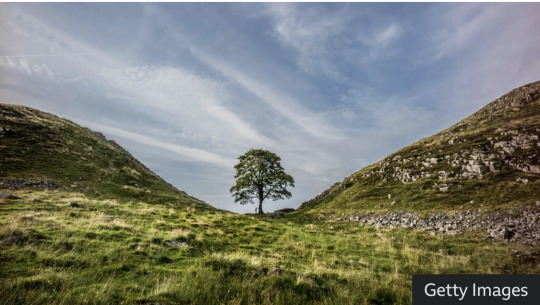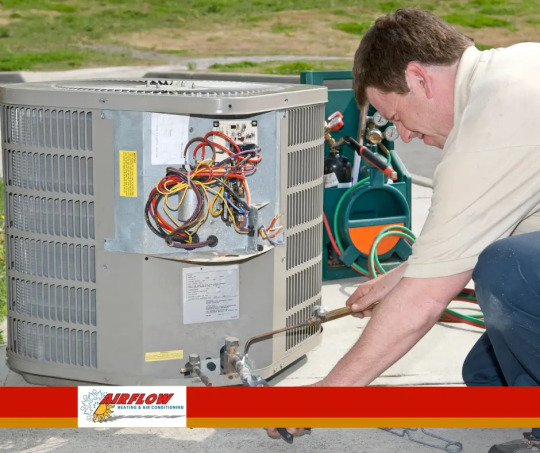#Heat pump installation
Explore tagged Tumblr posts
Text
Dandelion News - January 22-28
Like these weekly compilations? Tip me at $kaybarr1735 or check out my Dandelion Doodles!
1. Sunfish that got sick after aquarium closed has recovered — thanks to human cutouts

“A solitary sunfish […] appeared unwell days after the facility closed last month for renovations. As a last-ditch measure to save the popular fish, its keepers hung their uniforms and set up human cutouts outside the tank. The next morning, the sunfish ate for the first time in about a week and has been steadily recovering[….]”
2. Costco stands by DEI policies, accuses conservative lobbyists of 'broader agenda'

“[Each of the board of directors and 98% of shareholders voted to reject a measure against DEI.] Costco's board wrote that “our commitment to an enterprise rooted in respect and inclusion is appropriate and necessary[….]””
3. Nearly $37 Million Will Support Habitat Restoration in Coastal Louisiana

“The project will restore nearly 380 acres of marsh and construct more than 7,000 feet of terraces in St. Bernard Parish. […] Coastal wetlands help protect communities [… from] wind, waves, and flooding[… and] support a statewide seafood industry valued at nearly $1 billion per year.”
4. Cooling green roofs seemed like an impossible dream for Brazil's favelas. Not true!

“[… A Brazilian nonprofit] teaches favela residents how to build their own green roofs as a way to beat the heat without overloading electrical grids[…,] dampen noise pollution, improve building energy efficiency, prevent flooding by reducing storm water runoff and ease anxiety.”
5. Bacteria found to eat forever chemicals -- and even some of their toxic byproducts
“"Many previous studies have only reported the degradation of PFAS, but not the formation of metabolites. We not only accounted for PFAS byproducts but found some of them continued to be further degraded by the bacteria," says the study's first author[….]”
6. A father and daughter’s to turn oil data into life-saving water

“The aquifer [discovered through oil-owned seismic data], it turned out, was vast enough to provide water for 2 million people for more than a century.”
7. Trump’s funding pause won’t impact federal student loans, Pell Grants
“[… T]he temporary pause will not impact “assistance received directly by individuals,” including federal direct student loans and Pell Grants, which are government subsidies that help low-income students pay for college.”
8. In Uganda, a women-led reforestation initiative fights flooding, erosion

“[… T]he Kasese municipality has established nurseries to provide free tree seedlings, particularly to women, to support reforestation efforts. [… They] plant Ficus trees near their homesteads to provide shade and help control erosion, and Dracaena trees on their fields to retain soil moisture.”
9. [A Texas school board] votes yes to provide low-cost housing to staff at no cost to the district

“The program will include 300 homes[…] only a short commute to campuses. […] Rent will be determined on a sliding scale based on their salaries, with those making less receiving a larger discount. The proposed community would include amenities, like childcare facilities[….]”
10. Heat pumps keep widening their lead on gas furnaces

“Americans bought 37% more air-source heat pumps than the next-most-popular heating appliance, gas furnaces, during the first 11 months of the year. That smashes 2023’s record-setting lead of 21%.”
January 15-21 news here | (all credit for images and written material can be found at the source linked; I don’t claim credit for anything but curating.)
#hopepunk#good news#fish#sunfish#mola mola#aquarium#us politics#costco#dei#diversity equity and inclusion#louisiana#habitat restoration#green infrastructure#brazil#global warming#science#forever chemicals#recycling#water#water scarcity#big oil#student loans#federal aid#reforestation#gardening#low income#affordable housing#housing#school#heat pump installation
132 notes
·
View notes
Text
Heat Pump Installation & Services | Green Max Air
Green Max Air offers efficient heat pump installation services, providing both heating and cooling solutions for year-round comfort. Trust our HVAC experts for energy-efficient heat pumps that keep your home comfortable all year long.
Heat pump installation| Heat Pump Installation Services| Ducted Heat Pump Solutions| Energy-Efficient Furnace Installation| Air Conditioner Installation Services
For more info. visit our website -
https://greenmaxair.com/heat-pump/

2 notes
·
View notes
Text
Upgrade to Heat Pump Hot Water System in Sydney
As energy costs continue to rise, many homeowners in Sydney are looking for ways to save money on their monthly utility bills. One way to do this is by upgrading to a more energy-efficient hot water system, such as a heat pump. And if you’re looking for a way to get a new heat pump without breaking the bank, you may be interested in the “Free Heat Pump Installation” program from Voltage Wholesale.
#Heat Pump#Upgrade to Heat Pump#hot water system#sydney#Free Heat Pump Installation#heat pump installation#nsw#new south wales
2 notes
·
View notes
Text
Eco-Friendly Comfort: Air Source Heat Pumps for Hampshire Properties

In recent years, the need for sustainable and energy-efficient solutions has grown significantly. For homeowners in Hampshire, air source heat pumps (ASHPs) present an eco-friendly and cost-effective way to ensure comfort while reducing energy consumption. In this article, we delve into the benefits, functionality, and installation processes of air source heat pumps, showcasing why they are an excellent choice for Hampshire properties.
What Are Air Source Heat Pumps?
Air source heat pumps are innovative systems designed to extract heat from the outside air and transfer it into your home for heating and hot water. Even in colder climates, these pumps can efficiently convert ambient air into usable energy. Unlike conventional heating systems, ASHPs do not rely on fossil fuels, making them a greener alternative for homeowners aiming to lower their carbon footprint.
Key Benefits of Air Source Heat Pumps
1. Energy Efficiency
ASHPs are renowned for their high energy efficiency. For every unit of electricity used, they can generate up to three units of heat. This remarkable efficiency makes them a cost-effective solution, especially when paired with government incentives like the Boiler Upgrade Scheme.
2. Reduced Carbon Footprint
Switching to an air source heat pump can significantly reduce greenhouse gas emissions. By relying on renewable energy, these systems minimize the reliance on fossil fuels, contributing to a cleaner and more sustainable environment in Hampshire.
3. Lower Energy Bills
Thanks to their efficiency, homeowners can enjoy reduced energy bills. ASHPs work optimally when paired with well-insulated properties, ensuring that heat is retained and energy usage is minimized.
4. Year-Round Comfort
Many air source heat pumps come with dual functionality, providing both heating in the winter and cooling in the summer. This versatility ensures your home remains comfortable all year long.
5. Government Support and Incentives
In Hampshire, homeowners can benefit from government schemes designed to promote renewable energy adoption. Programs such as the Boiler Upgrade Scheme provide grants to offset the cost of installation, making ASHPs an attractive and affordable option.
How Do Air Source Heat Pumps Work?
Air source heat pumps operate by using a refrigeration cycle to extract heat from the air outside and transfer it into your home. Here is a breakdown of their operation:
Heat Absorption: The system absorbs heat from the outside air using a refrigerant.
Compression: The refrigerant is compressed, increasing its temperature.
Heat Transfer: The heat is transferred to the heating system in your home, such as radiators or underfloor heating.
Circulation: The cooled refrigerant returns to the outdoor unit, and the cycle repeats.
Even in low temperatures, ASHPs can effectively extract heat, making them a reliable option for Hampshire's climate.
Types of Air Source Heat Pumps
1. Air-to-Air Heat Pumps
These systems transfer heat from the outside air to indoor air, providing space heating. They are ideal for properties that require supplementary heating or do not have existing wet heating systems.
2. Air-to-Water Heat Pumps
Air-to-water systems transfer heat to a water-based central heating system, such as radiators or underfloor heating. These pumps are perfect for whole-house heating and hot water production.
Factors to Consider Before Installation
1. Property Insulation
Proper insulation is crucial for maximizing the efficiency of an air source heat pump. Ensure that your home is well-insulated to prevent heat loss.
2. Outdoor Space
ASHPs require adequate outdoor space for installation. The external unit should be placed in a well-ventilated area to ensure optimal performance.
3. Noise Levels
Modern air source heat pumps are designed to operate quietly, but placement away from bedrooms or neighboring properties is advisable to minimize any potential disturbances.
4. Heating System Compatibility
Before installation, assess your existing heating system. Air source heat pumps work best with low-temperature heating systems, such as underfloor heating or oversized radiators.
Steps for Installing Air Source Heat Pumps in Hampshire
Initial Assessment: A professional installer will evaluate your property to determine its suitability for an ASHP.
System Selection: Choose the right type and size of heat pump based on your home’s heating requirements.
Installation: The external unit is installed outside your property, and connections are made to your heating and hot water systems.
Commissioning: Once installed, the system is tested and configured to ensure optimal performance.
Maintenance: Regular maintenance is essential to keep your ASHP running efficiently. Clean filters and annual servicing are recommended.
Why Hampshire Homeowners Are Embracing Air Source Heat Pumps
The demand for air source heat pumps in Hampshire is rising due to their alignment with the county's sustainability goals. Hampshire’s mild climate is ideal for ASHPs, allowing them to operate efficiently throughout the year. Moreover, the availability of local installers and support services makes it easier for homeowners to transition to this eco-friendly solution.
Conclusion: A Sustainable Future with Air Source Heat Pumps
Air source heat pumps offer a practical and environmentally friendly solution for heating Hampshire properties. By choosing ASHPs, homeowners can enjoy lower energy bills, reduced carbon emissions, and year-round comfort. With government incentives and a growing network of professional installers, now is the perfect time to make the switch.
For Hampshire residents looking to enhance their home’s energy efficiency, air source heat pumps are a compelling choice. Explore the possibilities and join the movement towards a greener, more sustainable future.
#heat pump installation#air source heat pump#heat pump repair#heat pump maintenance#renewable energy#hampshire#uk
0 notes
Text
Optimizing Heat Pump Pipe Layout for Energy Efficiency
Improving energy efficiency is one of the primary goals of operating various industrial processes and district heating systems. This can be achieved by optimizing the layout of the heat pump pipe system through strategic placement and configuration.
Strategies for Optimizing Heat Pump Pipe Layout: Achieve Energy Efficiency
According to us-reviews.com, besides quality assurance of the pipes, pipe layout is also crucial in energy efficiency. For this reason, there are several strategies for optimizing heat pump pipe layout, leading to not only reduced energy consumption but also reduced operational costs and environmental impact. These strategies include:
Minimize pipe length and resistance
In order to minimize the length of heat pump pipes, the outdoor and indoor units should be placed close to each other. The layout of the building should also be considered before pipe placement to avoid lengthy and winding pipe runs. Moreover, shorter pipe runs help to minimize refrigerant charge, reduce heat loss, and reduce the pump's workload.
Improve pipe layout geometry
Pipe layout geometry can directly affect system performance and refrigerant flow. For example, tight turns and sharp bends in the piping system can create turbulence, pressure drop, and increase friction, which reduces energy efficiency. Pipe layout geometry can be optimized using gentle bends, avoiding unnecessary turns, and elevating the pipes.
Use logical sequence
Installation of the pipes should begin with the main larger pipes before installing the smaller pipes into different branches. Additionally, pipe routing should be considered based on the site conditions. Furthermore, the pipes should be laid in elevated areas to avoid the accumulation of debris and water that can occur when the pipes are laid in flat areas. By aligning the pipes to the natural terrain, installation complexity, and effort can be minimized
Proper spacing for supports
Pipe supports should be placed at appropriate intervals during the layout process. This can help to prevent vibration and sagging. Pipe hangers and brackets can also be used while considering the pipe size, material, and load-bearing capacity.
Reduce the number of fittings
Fittings like elbows, tees, and valves can increase pressure drop and material cost. Therefore, they should be minimally used throughout the entire layout process. Furthermore, prefabricated sections of pipes that have integrated fittings can be ideal during the pipe layout process. These sections can help to improve layout efficiency and reduce installation time.
Use thermal expansion joints
When laying the pipes, thermal expansion joints and loops should be accounted for to prevent the pipes from getting damaged by excess temperature and pressure changes. Furthermore, in long runs of metal pipes, more loops and joints should be used, unlike when laying shorter runs of metal pipes.
Conclusion
Optimizing a heat pump pipe layout remains critical in maximizing energy efficiency and reducing operational costs. This layout process can be optimized by minimizing pipe length, improving layout geometry, using thermal expansion joints, and reducing the number of fittings. Using a logical sequence and proper spacing of supports can also help to improve the layout process.
In addition, all these layout measures should be done to ensure the fluid used does not encounter pressure drops or resistance. This would lead to reduced workload and better efficiency and performance of the heat pump pipe network.
1 note
·
View note
Text
Daikin 7.1kW Split System Installation in Victoria: Features, Benefits & Cost Savings *Best Ever #discounts Available https://greentastic.com.au/daikin-7-1kw-split-system-installation-in-victoria-features-benefits-cost-savings/ #Greentastic #Daikin #splitsystem #melbourne #victorian #airconditionerinstallation
#air conditioning#veu program#melbourne#australia#heat pump installation#victoria energy program#air con installation
0 notes
Text
Choosing the Right Heat Pump for Your Pool or Commercial Space
If you’re looking for an efficient way to heat your swimming pool or commercial space, you may have encountered terms like pool heat pump, air source heat pump, and inverter heat pump. These technologies offer cost-efficiency and environmental benefits. Here’s how to choose the right system for your needs.
What is a Pool Heat Pump?
A pool heat pump is designed to maintain a comfortable water temperature in your pool by capturing ambient air and using it to heat the water. This makes it energy-efficient, especially in mild to warm climates.
Benefits:
Energy Efficiency: Uses less electricity than traditional heaters.
Consistent Temperature: Maintains a steady temperature.
Durability: Lasts over a decade with proper maintenance.
What is an Air Source Heat Pump?
An air source heat pump (ASHP) captures heat from the outside air and transfers it to your home, business, or pool. It can work even in cooler weather.
Advantages:
Eco-Friendly: Lowers carbon emissions and energy bills.
Low Maintenance: Requires minimal servicing.
What is an Inverter Heat Pump?

Why Choose One?
Energy Savings: Only uses the energy needed.
Quieter Operation: Operates more quietly than standard models.
Longer Lifespan: Less strain on components.
Commercial Heat Pumps
Commercial heat pumps are ideal for larger spaces like gyms, hotels, and public pools, providing scalable and efficient heating.
Benefits:
Cost Efficiency: Reduces energy costs over time.
Versatility: Customisable for different needs.
Sustainability: Helps meet environmental goals.
Choosing the Right Heat Pump
Consider these factors:
Size: Ensure it’s appropriately sized for your space.
Climate: Choose a model that suits your local climate.
Efficiency Ratings: Look for high energy efficiency.
Budget: Weigh upfront costs against potential savings.
Conclusion
The right heat pump can save money and lower your carbon footprint. At Powerbay, we offer a range of high-quality options for pools and commercial spaces. Explore our products today to find the perfect solution for your needs.
0 notes
Text
What Is Cheaper to Run: Gas or Electric?
Choosing between a gas or electric heating system depends on cost, efficiency, and long-term savings. While both options have pros and cons, gas heating is usually cheaper to run because natural gas prices are often lower than electricity rates. However, energy efficiency and home insulation also play a big role in overall costs.

Gas Heating: Lower Costs, Higher Efficiency
Gas furnaces are known for their fast, powerful heating and lower fuel costs. Natural gas is often more affordable than electricity, making gas furnaces a cost-effective choice, especially in colder climates. However, installation costs for gas systems can be higher, and they require regular maintenance.
Electric Heating: Cleaner, but Pricier
Electric furnaces and heaters are easy to install and require less maintenance, but they can be more expensive to run. Electricity rates are typically higher than gas, meaning you might pay more for heating during winter. However, electric systems have fewer emissions, making them an eco-friendly choice.
Converting Furnace to Heat Pump
If you're looking for an energy-efficient heating and cooling solution, converting a furnace to a heat pump could be a smart move. Heat pumps use electricity but are far more efficient than standard electric furnaces. They work by transferring heat rather than generating it, making them a great option for year-round comfort while reducing energy costs. Trust Efficiency Heating & Cooling specializes in professional heat pump conversions to help you save money and improve home efficiency.
Which One Is Right for You?
If you want lower heating costs, a gas furnace is often the better choice. But if you’re looking for clean energy and all-season comfort, a heat pump might be worth considering. The best option depends on your budget, climate, and long-term energy goals.
0 notes
Text
Generator Installation in Manchester, NH

We Look Forward To Helping You. Feel Free to Contact us.
0 notes
Text
Good News - March 8-14, 2024
Like these weekly compilations? Support me on Ko-fi! Also, if you tip me on here or Ko-fi, at the end of the month I’ll send you a link to all of the articles I found but didn’t use each week - almost double the content! (I’m new to taking tips on here; if it doesn’t show me your username or if you have DM’s turned off, please send me a screenshot of your payment)
1. Colorado could bring back wolverines in an unprecedented rewilding effort

“A bipartisan group of Colorado lawmakers are proposing legislation to reintroduce wolverines, one of the country’s rarest carnivores, into a state primed with deep snow and high mountains. The unprecedented move would be the first wolverine reintroduction in North America, and is part of an ongoing effort by Coloradans to restore the state’s native species.”
2. heat pumps slash emissions even if powered by a dirty grid

“Installing a heat pump now is better for the climate, even if you run it on U.S. electricity generated mostly by fossil fuels. […] Across the 48 continental states, RMI found that replacing a gas furnace with an efficient heat pump saves emissions not only cumulatively across the appliance’s lifetime, but also in the very first year it’s installed.”
3. Bald eagles seen nesting in Toronto for first time in city’s recorded history

“Presence of birds proof of improving health of city’s green spaces, as they are highly sensitive to environmental disturbances”
4. Good news for coral reef restoration efforts: Study finds 'full recovery' of reef growth within four years
“"We found that restored coral reefs can grow at the same speed as healthy coral reefs just four years after coral transplantation," says Ines Lange of University of Exeter, UK. "This means that they provide lots of habitat for marine life and efficiently protect the adjacent island from wave energy and erosion."”
5. The rewilding project bringing back an ancient breed of cattle to Portugal

“For millennia, grazing aurochs created open spaces for other species to thrive. As the closest to the extinct auroch depicted on the prehistoric engravings, Goderie says tauros can fulfil [sic] a similar ecological function that is vital for biodiversity. "Natural grazing will lead to more natural processes that are missing from local ecosystems, more habitats and more biodiversity," he says.”
6. Sycamore Gap: New life springs from rescued tree

“The horticulturalists also successfully planted seeds from the Sycamore Gap tree, now its descendants. Five months on, they are looking after nine surviving grafted plants and 40-50 seedlings.”
7. Massachusetts library will excuse overdue book charges in exchange for cat photos: ‘Feline Fee Forgiveness’

““Some of the staff were in a meeting and they were coming up with ways to bring people back to the library, and they thought, ‘What if we removed as many barriers as possible and told people they could show us a picture of a cat, draw a picture of a cat or just tell us about a cat?'””
8. Lesbian couple give birth to each other’s baby in UK first

“Their success marks the first time the procedure – which allows lesbian parents to simultaneously share in the pregnancy process, with one supplying eggs and the other carrying the baby – has been carried out in the UK.”
9. Biden-Harris administration has established four new units in the National Wildlife Refuge System

“The new four-million-acre conservation area will provide crucial protected wildlife corridors, enhance outdoor recreation access to the public and bolster climate resilience in southwest Florida.”
10. New truck front to save lives
“[B]etter truck designs can reduce passenger car compartment deformations by 30-60 percent, which reduces the risk of injury for the car occupants. Deformation of the truck was also reduced in sensitive areas and improved truck driver safety and cargo security.”
March 1-7 news here | (all credit for images and written material can be found at the source linked; I don’t claim credit for anything but curating.)
#hopepunk#good news#bald eagle#eagles#trees#sycamore gap#aurochs#portugal#cattle#heat pump installation#wolverine#colorado#coral reef#library#cats#lgbtqia#lgbtq#ivf#florida#puma#cougar#wildlife#habitat restoration#trucks#safety#animals#ecology#tauros#rewilding#uk
8 notes
·
View notes
Text
Essential Steps to Get Your Home Ready for a New AC System

A new air conditioning installation is a significant investment that can improve your home's comfort and energy efficiency. Proper preparation ensures a smooth process and maximizes the performance of your new system. Whether you're replacing an outdated unit or installing an air conditioner for the first time, following essential steps can help you get your home ready for the upgrade.
Assess Your Home’s Cooling Needs
Before scheduling an air conditioning installation, it’s important to evaluate your home’s specific cooling requirements. Factors such as the size of your home, insulation quality, number of occupants, and local climate all play a role in determining the right AC unit. Consulting with a professional HVAC technician can help you choose an appropriately sized system that will efficiently cool your space without excessive energy consumption.
Choose the Right Air Conditioning System
Selecting the best AC system for your home is crucial for long-term comfort and efficiency. There are several types of air conditioning units available, including:
Central Air Conditioners: Ideal for whole-home cooling, these systems use ductwork to distribute conditioned air evenly.
Ductless Mini-Splits: A great option for homes without ductwork, providing zoned cooling for different areas.
Window or Portable Units: Suitable for smaller spaces or supplemental cooling but not ideal for whole-home use.
Each type of air conditioner has its advantages, and an experienced HVAC technician can guide you in choosing the best system based on your home's layout and cooling needs.
Inspect and Prepare Your Ductwork
If your new air conditioning installation involves a central air system, it’s essential to ensure your ductwork is in good condition. Leaky or dirty ducts can reduce efficiency and cause uneven cooling. Have a professional inspect and seal any leaks before the installation process begins to maximize airflow and system performance.
Clear the Installation Area
To facilitate a hassle-free air conditioning installation, clear the area where the indoor and outdoor units will be placed. Remove any furniture, decor, or obstacles that might obstruct the installation process. For the outdoor unit, ensure the surrounding area is free from debris, plants, and other obstructions to allow for proper airflow and system efficiency.
Ensure Proper Electrical Setup
A new AC system may require electrical upgrades to handle the power load efficiently. Check with your HVAC technician or electrician to confirm that your home’s electrical panel and wiring meet the necessary requirements. This step prevents issues such as system malfunctions or power failures due to inadequate electrical capacity.
Improve Home Insulation and Sealing
To maximize the efficiency of your air conditioning installation, evaluate your home’s insulation and sealing. Proper insulation helps maintain consistent indoor temperatures and reduces the workload on your AC unit. Sealing gaps around windows, doors, and vents prevents cool air from escaping and minimizes energy waste, leading to lower utility bills.
Consider Smart Thermostat Integration
Upgrading to a smart thermostat can enhance the performance of your new AC system by providing precise temperature control and energy savings. Many modern air conditioning installations include compatibility with smart thermostats, allowing you to program cooling schedules, monitor energy usage, and adjust settings remotely.
Plan for Routine Maintenance
Once your air conditioning installation is complete, regular maintenance is key to ensuring longevity and optimal performance. Schedule periodic inspections, clean or replace filters, and check refrigerant levels to keep your system running efficiently. A well-maintained AC unit reduces the risk of breakdowns and extends its lifespan, providing reliable cooling for years to come.
Final Thoughts on Preparing for Air Conditioning Installation
Proper preparation is crucial for a successful air conditioning installation. By assessing your cooling needs, selecting the right system, preparing your home, and optimizing insulation, you can ensure maximum efficiency and comfort. Consulting with a qualified HVAC professional will help streamline the process and guarantee a seamless installation. Investing time in preparation will not only improve your AC’s performance but also enhance your home’s overall energy efficiency and indoor comfort.
#AC Installation#Air Conditioning Installation#HVAC Installation#Central AC Installation#Ductless AC Installation#Home Cooling System#Energy-Efficient AC#New AC Unit#Residential AC Installation#Professional AC Installation#HVAC System Setup#Air Conditioner Replacement#Cooling System Installation#Best AC for Home#Smart Thermostat Installation#HVAC Ductwork#Ventilation System#Airflow Optimization#Home Comfort Solutions#AC Efficiency Tips#Climate Control#Indoor Air Quality#Heat Pump Installation#Air Conditioning Services#Cooling System Upgrade.
0 notes
Text
Preparing for Heat Pump Installation: A Seasonal Guide

Summary:
Are you preparing to install your heat pump? This article examines various aspects of the process, including the best time to begin installation, extending the unit’s lifespan, and choosing the right heat pump for your needs.
Table of Contents
Introduction
What to Know Before Installing a Heat Pump
1. Understanding Heat Pump Installation Requirements
2. Benefits of Heat Pumps for Year-Round Comfort
3. Choosing the Right Heat Pump for Your Home
Seasonal Considerations for Heat Pump Installation
1. Why Spring and Fall Are the Best Times for Heat Pump Installation
2. How Weather Affects Heat Pump Efficiency
3. Ensuring Proper Heat Pump Placement
How Heating Service Plays a Role in Heat Pump Performance
1. Regular Maintenance for Heat Pump Efficiency
2. Signs Your Heat Pump Needs Service
3. Ensuring Long-Term Performance with Professional Heating Services
Closing Note
Introduction
Heat pumps offer a versatile, eco-friendly solution for heating and cooling your home. They have many benefits but are also prone to common mistakes. The most common mistake occurs during installation when people don’t fulfill all the requirements, resulting in an incorrect installation.
A successful installation requires careful planning and preparation. As experienced heating contractors in Orange County, Klondike Air considers the unique challenges and opportunities presented at each time of the year, enabling us to provide your home with efficient and reliable heating service all year long.
This article provides a comprehensive seasonal guide to preparing for heat pump installation and will help you navigate the process without stress.
Let’s begin.
What to Know Before Installing a Heat Pump
Heat pumps transfer heat from one place to another using a small amount of energy. During the colder months, they extract heat from the outside air or the ground and move it inwards to warm your home. In the warmer months, they do the reverse with as little energy as possible, making them the perfect home comfort equipment.
1. Understanding Heat Pump Installation Requirements
All heating pumps have different installation requirements. We have highlighted the most common here:
Location: One of the requirements that affect efficient heating service is the location of the heat pump. The heat pump should be located next to the external wall for easy connection to your home. It should also be kept in a cool and dry place, as some experts believe direct sunlight can affect efficiency.
Flat Surface: A heat pump requires a flat surface for its installation. If the ground is sloped, ensure that a flat surface, preferably concrete, is built because of its mounting points.
Sufficient Airflow: Heat pumps need enough airflow to function correctly and efficiently. Without enough airflow, the system will work harder and accumulate minor wear and tear, eventually leading to a breakdown and costly repairs.
2. Benefits of Heat Pumps for Year-Round Comfort
Energy Efficiency: Heat pumps are highly efficient because they transfer heat instead of generating it through combustion. This results in lower energy consumption and reduced utility bills for homeowners and businesses.
Quiet: Heat pumps are designed to be soundless, significantly contributing to improved living conditions.
Low Maintenance: One of the most significant benefits of heat pumps is that they are incredibly durable and require very little maintenance. Yearly servicing and repair are enough to get the system operating optimally all year.
Improved Air Quality: Unlike traditional heating systems, heat pumps dehumidify and filter the air, removing dust, allergens, and excess moisture. This creates a healthier and more comfortable indoor environment.
Eco-Friendly: Traditional heating systems rely on fossil fuels for efficient heating service, contributing to greenhouse emissions and environmental damage. However, heat pumps use renewable energy sources, making them perfect for eco-conscious homeowners.
3. Choosing the Right Heat Pump for Your Home
Size: A heat pump that is too small will not keep up with your cooling and heating needs, while one that is too large will waste energy and money. A professional installer can help you determine the correct size based on your home’s square footage, insulation, and number of windows.
Climate Considerations: While heat pumps work well in certain conditions, some models are better suited to specific weather patterns than others. If you live in a region with harsh winters, you should use a heat pump with a higher SCOP, which indicates better performance in colder months.
Noise Levels: If you’re sensitive to noise, choose pumps with lower decibel ratings, which indicate quieter operation.
Seasonal Considerations for Heat Pump Installation
1. Why Spring and Fall Are the Best Times for Heat Pump Installation
If snow or ice is on the ground, it may be unsafe for technicians to work on a ladder or your roof. We recommend scheduling your installation in spring or fall when the weather is generally milder and more predictable. Additionally, installing heat pumps in the offseason can help you save money on energy bills.
2. How Weather Affects Heat Pump Efficiency
Heat pumps perform very efficiently in hot climates because there’s much ambient heat to transfer. However, extreme heat can strain the system, especially if it is not maintained correctly.
However, in damp climates, the system struggles to provide effective heating service because it has to work harder to remove moisture from the air and transfer the heat. Advanced heat pump models can handle such conditions.
Heat pumps also work well in cold climates, but that depends on the system’s efficiency rating and the type of heat pump you use. Ground-source heat pumps are designed to handle freezing temperatures; the same is true for systems with higher SCOP ratings.
3. Ensuring Proper Heat Pump Placement
Placing your heat pump in the right location is essential for the system’s efficiency and longevity. The ideal spot combines several factors, including accessibility for maintenance, optimal airflow for maintenance, and minimal noise disruption for your living space.
Accessibility: You must ensure the heat pump is in an accessible location for future maintenance and repairs.
Airflow: Heat pumps should be placed with no barrier and good airflow. This aids effective heat exchange and improves its efficiency.
Noise: You should place the heat pump where its noise can not affect your quality of life.
Level and Stability: The heat pump should be placed on stable, level ground to support its stability.
How Heating Service Plays a Role in Heat Pump Performance
1. Regular Maintenance for Heat Pump Efficiency
Proper maintenance is key to proper operation, as with all heating and cooling systems. Some maintenance checklists for heat pumps include:
Filter Checks and Replacements: Filters prevent dirt, dust, pollens, and other contaminants from entering your home. Over time, these filters get dirty and clogged, restricting airflow and making your heat pump work harder. If not cleaned or replaced, they can cause overheating, accumulate wear and tear, and eventually break down.
Cleaning the coils: The coils play a crucial role in transferring heat. The evaporator coil absorbs heat from the air while the condenser coil releases it. When these coils get dirty, your heat pump will no longer be efficient, driving energy bills.
Inspect the Outdoor Units: Ensure the outdoor unit is not exposed to dust, dirt, and debris. Also, ensure the surroundings are clear of all things that can obstruct airflow and prevent proper operation.
Check the Thermostat: The thermostat is the brain of the heat pump. If the thermostat is not working well, you will notice uneven heating throughout your home.
Check Refrigerant Levels: Your heat pump relies on refrigerant to transfer heat indoors and outdoors. If the refrigerant levels are too low, your heat pump will not be able to heat or cool your home effectively.
2. Signs Your Heat Pump Needs Service
Inconsistent Heating or Cooling: If some rooms are warm while others are chilly, your heat pump may struggle to distribute air effectively. The problem could be with the ductwork, thermostat settings, or refrigerant levels.
Unusual Noises: Heat pumps are designed to operate quietly. If you notice a strange noise from the system, it could be a loose part, malfunctioning motor, or dirt within the unit.
Increase in Energy Bills: An unexpected spike in your energy bills signifies inefficient heat pump operation. The problem could be a leaky ductwork or a failing compressor.
Frequent Cycling: If your heat pump cycles on and off more frequently than usual, the problem could be a malfunctioning thermostat, a clogged filter, or an incorrectly sized heater.
Frequent Repairs: If your heat pump constantly needs repairs, it could be the wear and tear coming due. You should contact a professional heating service for exhaustive servicing.
3. Ensuring Long-Term Performance with Professional Heating Services
Heat pumps are generally more durable and require less maintenance than traditional heating systems. The average heat pump can last 15-25 years, but with regular and professional heating services, you can enjoy efficient heating for up to 30 years. As an experienced heating contractor in Orange County, Klondike Air is ready to help improve your heat pump’s efficiency and lifespan. Give us a call now.
Closing Note
Heat pumps are the most efficient and eco-friendly home comfort option. These systems require little energy to function efficiently, and you can increase their efficiency and lifespan with a bit of heating service. However, none of these will be possible with a proper installation. Contact Klondike Air now for help with your heat pump installation and maintenance.
This blog was originally published at https://klondikeair.com/heat-pump-installation-seasonal-guide/
0 notes
Text
#dosolar#solarpanelsmelbourne#affordable5kwsolarsystempricevictoria#accoupledbatteryreservoir#6.6kwsolarpanelniddrie#solar energy#solar power#solar#solar panels#solarpanels#heat pump hot water system#heat pump water heater#heat pump system#heat pump installation#heat pump repair#heatpumphotwatersystem#heatpumpwaterheater#buy 6.6 kw solarsystemvictoria#solarsystem#10kwsolarbatteryspringvale#10kwsolarsystemdandenong#10kwsolarsystemmorwell#10kwsolarsystemsydney#10kwsolarsystemoakleigh
0 notes
Text
Smart, Sustainable, and Affordable: Air Source Heat Pump Cylinders

In today’s quest for energy-efficient solutions, air source heat pump (ASHP) cylinders are emerging as a revolutionary option. Combining advanced technology, sustainability, and cost-effectiveness, these systems are setting new benchmarks in residential and commercial heating solutions. Below, we delve into the key aspects of air source heat pump cylinders, their benefits, and why they are a smart investment for the future.
What Are Air Source Heat Pump Cylinders?
Air source heat pump cylinders are advanced heating systems designed to efficiently extract heat from the outside air and use it to heat water stored in an insulated cylinder. By utilizing renewable energy from the air, these systems significantly reduce reliance on traditional fossil fuels, making them an environmentally friendly option for heating and hot water needs.
How Do Air Source Heat Pump Cylinders Work?
The operation of ASHP cylinders is based on a simple yet ingenious process:
Heat Extraction: The heat pump extracts low-grade heat from the ambient air using a refrigerant.
Compression: The heat is compressed to a higher temperature suitable for domestic heating and hot water.
Heat Transfer: The heated refrigerant transfers energy to the water in the cylinder.
Cycle Repetition: This cycle repeats continuously, ensuring a steady supply of hot water.
Benefits of Air Source Heat Pump Cylinders
1. Energy Efficiency
Air source heat pumps can achieve efficiencies of up to 300%, meaning they produce three times the energy they consume. This efficiency translates into reduced energy bills and a smaller carbon footprint.
2. Environmental Sustainability
By harnessing renewable energy from the air, ASHP cylinders drastically lower greenhouse gas emissions. They are aligned with global efforts to combat climate change and meet carbon neutrality goals.
3. Cost Savings
While the initial installation cost may seem significant, the long-term savings on energy bills make ASHP cylinders a cost-effective solution. Additionally, many governments offer subsidies or tax incentives for adopting renewable energy systems.
4. Versatility
Air source heat pumps are versatile and work effectively across various climates. They can also integrate seamlessly with underfloor heating, radiators, or traditional water heating systems.
5. Low Maintenance
With fewer moving parts than traditional heating systems, ASHP cylinders require minimal maintenance, ensuring reliable performance over their lifespan.
Key Features of Modern Air Source Heat Pump Cylinders
1. Advanced Insulation
Modern ASHP cylinders come equipped with high-grade insulation to minimize heat loss, ensuring maximum efficiency.
2. Smart Controls
Integrated smart controls allow users to monitor and optimize the system’s performance remotely. This feature enhances energy savings and convenience.
3. Quiet Operation
State-of-the-art designs ensure quieter operation, making them suitable for residential and urban settings.
4. Compact Design
Despite their powerful capabilities, ASHP cylinders are designed to be space-efficient, fitting easily into homes of all sizes.
Installation and Considerations
1. Professional Assessment
Before installation, it is crucial to have a professional assessment of your property’s heating requirements and insulation levels. This ensures optimal performance.
2. Placement
The outdoor unit of the heat pump should be placed in a well-ventilated area, free from obstructions, to maximize heat absorption.
3. Compatibility
Ensure the system is compatible with existing infrastructure, such as radiators or underfloor heating systems, for seamless integration.
4. Permits and Incentives
Check local regulations and available government incentives to offset installation costs.
Comparing Air Source Heat Pump Cylinders with Traditional Systems
1. Efficiency
Traditional heating systems, such as boilers, typically operate at efficiencies of 70-90%, whereas ASHP cylinders can achieve up to 300% efficiency.
2. Running Costs
While traditional systems rely on fossil fuels, ASHP cylinders leverage renewable energy, significantly reducing running costs.
3. Environmental Impact
ASHP cylinders produce minimal emissions compared to gas or oil-based systems, making them a more sustainable choice.
Why Choose Air Source Heat Pump Cylinders?
Switching to air source heat pump cylinders is a forward-thinking decision that combines environmental responsibility with economic benefits. By investing in this technology, you are:
Reducing your carbon footprint
Lowering energy bills
Enhancing property value
Contributing to a sustainable future
Frequently Asked Questions (FAQs)
1. Are air source heat pumps suitable for all climates?
Yes, modern ASHP systems are designed to operate efficiently in a wide range of temperatures, though performance may vary in extremely cold climates.
2. How long do air source heat pump cylinders last?
With proper maintenance, ASHP cylinders can last 15-20 years, offering excellent long-term value.
3. Are there government incentives for installing air source heat pumps?
Many countries offer financial incentives, such as grants or tax credits, to encourage the adoption of renewable energy solutions.
4. What is the maintenance requirement for ASHP cylinders?
Routine maintenance includes checking refrigerant levels, cleaning filters, and ensuring proper airflow around the outdoor unit.
5. Can air source heat pumps work with solar panels?
Yes, integrating solar panels with ASHP systems can further enhance energy efficiency and sustainability.
Conclusion
Air source heat pump cylinders represent a smart, sustainable, and affordable solution for modern heating and hot water needs. With their impressive efficiency, environmental benefits, and long-term cost savings, they are a wise investment for homeowners and businesses alike. As the world moves towards greener technologies, ASHP cylinders stand out as a practical and impactful choice.
0 notes
Text

Solar battery storage systems, often referred to simply as solar batteries, store the excess energy your solar panels produce. This stored energy can be used later, such as at night or during cloudy periods when your panels aren’t generating power. Using a solar battery can help you become more self-sufficient, lower your energy costs, and provide power during outages.
Solar Battery Storage in Australia
0 notes
Text

Reliable Heat Pump Installation Services in Maryland Smith & Company HVAC specializes in energy-efficient heat pump installation to keep your home comfortable year-round. Heat pumps are an eco-friendly solution that provides heating and cooling, reducing energy bills and carbon footprint. Our technicians ensure seamless installation for optimal performance and longevity.
We proudly serve Maryland, including Anne Arundel and Baltimore counties, offering high-quality services and exceptional customer care. Schedule your heat pump installation with Smith & Company HVAC today—call us now!
2 notes
·
View notes